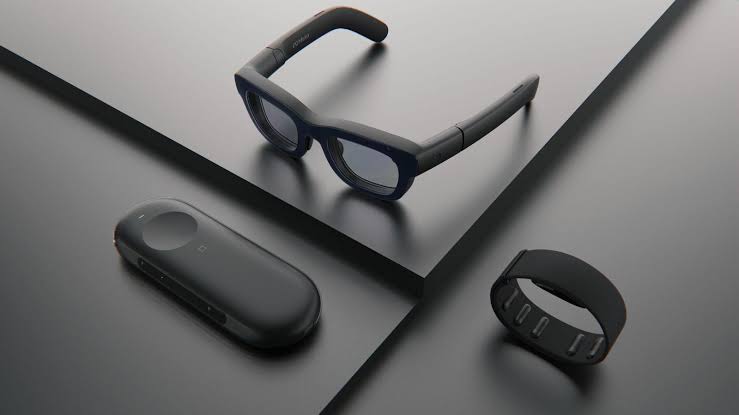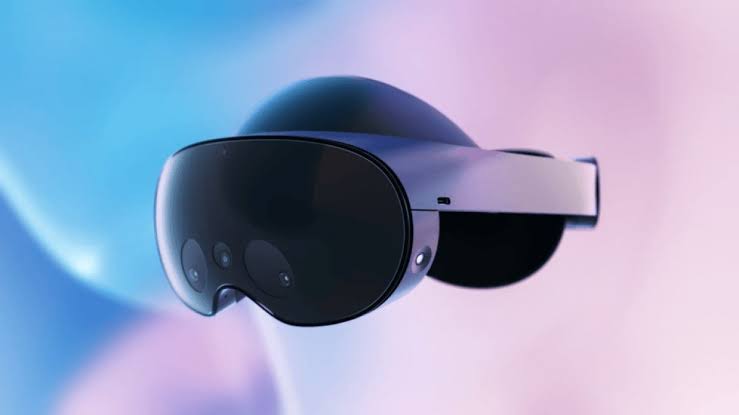Meta’s Mission: Shaping the Future of Augmented Reality and Virtual Reality
Mark Zuckerberg has often said that Meta is more than a social media company. Its long-term goal is to redefine how humans interact with technology—and with each other. By 2026, Meta aims to lead a technological revolution powered by augmented reality (AR), virtual reality (VR), and artificial intelligence (AI).
Instead of simply tapping on phone screens, Meta’s vision is about creating a future where:
- AR glasses deliver information seamlessly into our field of view.
- VR headsets immerse us in entirely new digital worlds for learning, work, and play.
- AI assistants anticipate needs, personalize experiences, and expand creativity.
This isn’t about replacing real-world experiences. Zuckerberg insists it’s about making digital interactions more human-like, intuitive, and emotionally rich.
Orion AR Glasses: Meta’s Next Big Platform Beyond Smartphones
Perhaps the most ambitious project Meta has revealed is its Orion AR glasses, which Zuckerberg calls the next major computing platform after smartphones.
How Orion AR Glasses Use AI and Holograms for Human Connection
The Orion glasses combine holographic projection, advanced AI, and lightweight design to deliver unprecedented experiences. Some key possibilities include:
- Holographic presence: Attend a meeting across the globe as a full-body 3D hologram.
- Interactive collaboration: Play a chess match or design prototypes with colleagues virtually.
- Family togetherness: Share birthdays or holidays in real-time holographic gatherings.
By combining AI-driven contextual awareness with gesture and voice commands, Orion makes interactions feel natural, eliminating the gap between digital and physical worlds.
Waveguide Display & Eye Tracking: Powering Augmented Reality Experiences
The Orion AR glasses use waveguide display technology, which overlays lifelike holograms directly into a user’s vision. Eye-tracking further enhances immersion, ensuring that holograms respond realistically to where you’re looking.
In essence, Orion could transform glasses into portable, always-on supercomputers that fit seamlessly into daily life.
Watch This Video To Know More :- What is Mark Zuckerberg’s Vision for Meta’s Augmented Reality & Virtual Reality Revolution in 2026?
Meta Product Ecosystem: Ray-Ban Meta, AR Glasses & VR Headsets
To achieve mass adoption, Meta has developed a tiered product ecosystem. Each device fits a specific price point and functionality level, ensuring accessibility for billions of users.
Ray-Ban Meta Smart Glasses: Affordable AI Wearables
- Stylish, everyday glasses built in partnership with Ray-Ban.
- Integrated cameras and microphones for content capture.
- AI assistant support for voice commands and communication.
- Aimed at users who want smart functionality without full AR.
Heads-Up Display Glasses: The Bridge to Full Augmented Reality
- Mid-tier glasses that overlay texts, calls, and directions.
- Designed for convenience in navigation, messaging, and productivity.
- Serves as an entry point before adopting holographic AR.
Orion AR Glasses: Premium Holographic Experiences
- Flagship product for immersive AR.
- Capable of full-body holographic presence.
- Best for business collaboration, professional design, and immersive entertainment.
Meta Quest 3 & Quest 3S: Virtual Reality for Everyone
- Affordable VR headsets for gaming, work, and social interaction.
- Mixed reality features merge AR and VR seamlessly.
- Meta Quest 3S makes VR accessible to broader audiences with lower costs.
📌 Together, these devices ensure Meta has solutions for casual users, professionals, and innovators alike.
Human Connection in the Digital Era with AR, VR & AI
The decline of in-person socialization has been a growing societal concern. Surveys like the American Time Use Survey show that people today spend significantly less time in face-to-face interactions compared to 20 years ago.

Why AR and VR Will Not Replace but Enhance Real Socialization
Meta believes AR and VR will help reverse loneliness trends by enabling:
- Remote family bonding across continents.
- Virtual offices that feel more authentic than Zoom calls.
- Shared social activities like concerts, sports, and games in virtual spaces.
Avatars, Haptics, and Presence: Making Virtual Reality Feel Real
- Hyper-realistic avatars mirror facial expressions in real time.
- Haptic gloves and sensors simulate touch, allowing users to “feel” objects.
- Presence technology convinces the brain that others are physically near.
Challenges remain in replicating senses like smell and deeper tactile feedback, but Meta’s focus is on creating realistic presence that strengthens human bonds.
Generative AI in Social Media: Meta’s Vision for Content Creation
By 2026, generative AI is expected to reshape social media entirely. Zuckerberg believes AI won’t just help users consume content—it will help them create it at scale.
AI-Powered Memes, Video Editing, and Creative Content
- AI can instantly edit short videos recorded with smart glasses.
- Users can generate memes, captions, and animations with simple prompts.
- Content creation becomes faster, fun, and more accessible to everyone.
The Rise of AI Influencers and Personalized Feeds
- AI-driven influencers will create unique identities online.
- Personalized AI feeds will ensure hyper-relevant content streams.
- While concerns exist around filter bubbles, Zuckerberg highlights creative empowerment as the bigger opportunity.
AI Personalization and Ethics in Meta’s Future Technology
Meta’s biggest bet isn’t just hardware—it’s personalized AI that adapts to each user’s needs.
AI Assistants for Productivity and Emotional Support
- AI can summarize meetings, create reminders, and draft creative ideas.
- Emotional AI companions could help users articulate feelings.
- Future AR glasses might serve as personal coaches, tutors, and collaborators.
The Role of AI in Education and Parenting
Questions arise in the age of AI-powered learning:
- Should children still learn coding if AI writes code better?
- Should math be taught traditionally or through AI-assisted methods?
- Can AI improve kids’ emotional expression and creativity?
Zuckerberg believes AI should accelerate learning without replacing intellectual development—like calculators improved math learning without eliminating core skills.

Open-Source AI: Meta’s Commitment with LLaMA Models
Unlike competitors that guard AI as proprietary, Meta has open-sourced its LLaMA models, allowing developers worldwide to experiment and innovate.
How Open-Source AI Shapes Innovation and Accessibility
- Democratizes access to advanced AI.
- Promotes research collaboration across industries.
- Prevents AI dominance by a small group of tech giants.
Ethical Concerns and the Importance of Adaptability
Zuckerberg admits there are risks:
- Job disruption in certain industries.
- Bias and misinformation from AI-generated content.
- The rapid pace of change can overwhelm both workers and families.
His solution? Foster adaptability and lifelong learning. In 2026 and beyond, those who remain curious and resilient will thrive in the new digital age.
Conclusion: Meta’s AR, VR & AI Future and What It Means for Society
Meta’s bold 2026 vision is both optimistic and pragmatic. By combining AR, VR, and AI, Zuckerberg believes humanity can unlock:
- New levels of creativity through generative AI.
- Deeper social connections via holograms and virtual presence.
- Inclusive access through affordable devices and open-source AI.
Yet, challenges remain in ethics, authenticity, and emotional depth. The road ahead demands responsible design, transparency, and adaptability.
If the past decade was shaped by smartphones, the coming decade—leading into 2026—may well belong to AR glasses, VR headsets, and AI assistants. Those who embrace this transformation will be the pioneers of a new era of digital connection.
🔎 FAQs on Meta’s Vision, AR, VR & AI
What will VR look like in 2030?
By 2030, VR will be far more immersive, realistic, and accessible. With devices like Meta Quest headsets evolving into lightweight, wireless, and affordable options, VR will blend with augmented reality (AR) to create a mixed-reality ecosystem.
Expect:
> Full-body avatars with real-time facial expressions.
> Haptic suits & gloves for touch and sensation.
> VR integrated into education, healthcare, and workspaces.
> Metaverse-style collaboration, where meetings, concerts, and gaming feel real.
Is VR the future of education?
Yes, VR is rapidly becoming a transformational tool in education. Instead of passive learning, students can step into virtual labs, historical events, or 3D classrooms. With Meta and other tech leaders investing in VR content, schools will:
> Provide immersive STEM experiments.
> Enable virtual field trips to museums, space, or ancient civilizations.
> Offer skill-based training (e.g., medical surgeries, engineering, design).
> By 2030, VR in education will be as common as online learning today.
How will AR affect the economy?
AR will become a multi-trillion-dollar driver of the global economy by 2030. From retail and e-commerce to manufacturing and healthcare, AR is set to redefine industries. Examples:
> Retail: AR mirrors & virtual try-ons boost online shopping.
> Real estate: AR home tours save costs and increase sales.
> Healthcare: AR assists surgeons with real-time overlays.
> Workplace productivity: AR glasses (like Meta’s Orion) will replace laptops for many tasks.
> According to forecasts, the AR & VR market could exceed $450B by 2030.
Will VR replace reality?
No — VR will not replace physical reality, but it will enhance it. Zuckerberg emphasizes that Meta’s vision is to connect people more naturally, not to isolate them.
> VR will help people who can’t physically meet.
> Holograms and avatars will feel real enough for work and socializing.
> Hybrid experiences (e.g., AR + VR) will let us blend real life with digital spaces.
> Reality will remain essential, but VR will be an extension of it.
Does AR/VR have a future?
Absolutely — AR/VR is the next major computing platform after smartphones. With innovations like Meta’s Orion AR glasses, Ray-Ban Meta wearables, and Quest VR headsets, the ecosystem is evolving quickly.
> AR/VR adoption is growing across gaming, education, healthcare, retail, and remote work.
> Major companies (Meta, Apple, Microsoft, Google) are heavily invested.
> By 2030, AR/VR will be as essential as smartphones are today.
What is the AR market in 2030?
The global AR market is projected to grow exponentially, reaching hundreds of billions of dollars by 2030.
> Retail AR market: Expected to surpass $60B by 2030.
> Healthcare AR: Estimated to grow at 25% CAGR due to demand in surgeries & diagnostics.
> AR in marketing: Immersive ads & product visualization will dominate brand strategies.
> Meta’s open-source AI (LLaMA) and Orion glasses will play a key role in driving this adoption.
What will replace the internet?
By 2050, many experts predict the Metaverse & spatial computing will evolve into the next version of the internet. Instead of flat 2D browsing, people will experience:
> 3D holographic interfaces via AR glasses.
> Immersive digital worlds connected by VR.
> AI-driven assistants acting as personalized browsers.
> Zuckerberg envisions this as a “social internet”, where presence and interaction replace static clicks and scrolling.
What are Orion AR glasses?
Orion AR glasses are Meta’s next-generation augmented reality device, positioned as the successor to smartphones. Unlike smart glasses like Ray-Ban Meta, Orion uses holographic waveguide displays, AI integration, and full-body hologram projection. These features enable:
> 3D telepresence (attending meetings, concerts, or family gatherings virtually).
> Hands-free AI assistance for productivity and real-time information.
> Immersive collaboration where users feel physically present despite distance.
Zuckerberg positions Orion as the core platform for the future of AR and VR.
How will AR glasses evolve by 2029?
By 2029, AR glasses will become lighter, cheaper, and more mainstream. Expect major advances in:
> Battery efficiency for all-day wear.
> Seamless AI integration for real-time translation, navigation, and personal assistance.
> Enhanced holograms for lifelike avatars and realistic remote collaboration.
> Fashion-forward designs so AR glasses look like everyday eyewear.
Meta’s Orion, Apple’s Vision Pro evolution, and Google’s rumored AR projects will lead this adoption.
What is the future of AR and VR?
The future of AR and VR lies in convergence. Instead of separate devices, mixed-reality ecosystems will dominate. By 2030:
> AR will be used for daily productivity, retail shopping, and healthcare.
> VR will power entertainment, education, and immersive collaboration.
> AI will act as the glue, personalizing experiences and enabling human-like virtual assistants.
> Meta’s vision is to make AR/VR as essential as the internet and smartphones are today.
Which company makes AR glasses?
Currently, AR glasses are being developed by several tech giants:
> Meta (Orion, Ray-Ban Meta Smart Glasses)
> Apple (Vision Pro ecosystem, AR roadmap)
> Google (Project Iris, AR prototypes)
> Microsoft (HoloLens, enterprise focus)
Meta’s Orion stands out because it blends consumer affordability, social connection, and open-source AI models (LLaMA).
What problems do Meta Orion glasses solve?
Meta’s Orion AR glasses are designed to solve key challenges:
> Remote presence: Allowing holographic meetings and lifelike collaboration.
> Screen overload: Replacing smartphones, reducing dependence on 2D screens.
> Accessibility: Providing AI-powered real-time translations, navigation for the visually impaired, and contextual learning.
> Social isolation: Helping people feel present with loved ones, even when apart.
In short, Orion isn’t just about AR—it’s about reshaping human connection.
Can AR glasses be used for VR?
Yes, but with limitations. While AR glasses like Orion focus on overlaying digital content on the real world, they can be adapted for light VR experiences. However, VR headsets like Meta Quest 3 remain superior for fully immersive gaming, simulations, and entertainment. In the future, we may see hybrid mixed-reality glasses that merge AR and VR seamlessly.
What is the difference between AR and VR glasses?
> AR Glasses (Orion, Ray-Ban Meta): Overlay digital holograms onto the real world. Perfect for navigation, productivity, and communication.
> VR Glasses/Headsets (Meta Quest, Apple Vision Pro): Create a fully immersive digital environment, best for gaming, virtual meetings, and training.
The future lies in convergence, where AR and VR merge into a single wearable device.
